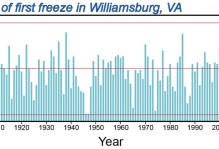The Bailout Mess
Earlier today, the House rejected legislation to implement the bipartisan agreement to shore up our nation’s financial markets. What the heck happened?
Public opinion polls indicate that the public is generally skeptical about the deal. According to a recent New York Times survey, 42 percent of respondents expressed support for the plan, while 46 percent were opposed. From what I’ve heard over the past few days, telephone calls, emails, and letters to most congressional offices have been running overwhelmingly against the bipartisan bailout agreement. Not surprisingly, members of the House, who face the voters in just five shorts weeks, were highly reluctant to vote “yes” pretty much across the board.
Democratic and Republicans leaders in both chambers, however, along with the Bush administration, urged rank-and-file lawmakers to suck it up and endorse the plan. No one wants to pump $700 billion into Wall Street, but the administration and the bipartisan leadership came to believe that the alternative might be much, much worse – frozen credit markets, a severe economic contraction, and a significant loss of jobs. For those of us involved in higher education, a consequence might be substantially greater difficulty for parents to secure the loans necessary to send their children to college. Indeed, the early signs are very troubling. Today, the Dow Jones Industrial average dropped almost 800 points, the largest daily point drop in history.
As I have mentioned previously on this blog, over the past few years my students and I have spent many hours coding and analyzing data from the whip counts conducted by House and Senate leaders. In both chambers, Democrats and Republicans have party “whips,” individuals responsible for promoting their respective party programs and conducting nose counts of the leanings of rank-and-file members prior to important roll call votes. This afternoon, why were the House whips unable to secure the 12 additional votes necessary to pass the bailout package, especially given the potentially high stakes for the country?
This evening, the pundits and politicos on television are engaged in partisan recriminations and finger pointing. Democrats are blaming Republicans and Republicans are blaming Democrats. But what really happened?
There is no way to know for sure, but I have some thoughts. Like a lot of congressional scholars and our students, I watched the roll call as it unfolded on C-SPAN. When the cameras panned the floor, viewers could catch glimpses of Speaker Nancy Pelosi and other Democratic leaders furiously lobbying their members, attempting to secure as many Democratic votes as possible. But across the aisle, on the Republican side, there was very little visible “whipping” by the GOP leadership. Republican members had especially strong ideological and political reasons not to vote “yes.” My understanding is that Pelosi, observing the lack of Republican lobbying from across the chamber floor, eventually stopped pressuring recalcitrant Democrats to toe the leadership line. The bill went down, 205-228. 133 House Republicans voted “no.” So did 95 Democrats.
In my courses about American politics and the Congress at William and Mary, students often express a lot of skepticism about the values and integrity of our national lawmakers. I generally emphasize that the quality of people serving on Capitol Hill is actually quite high and that the conflicts and partisan maneuvering so apparent in Congress actually reflect deep differences of opinion among politically engaged Americans. Still, there are occasions when what the country really needs is leadership. Unfortunately, very little of it was apparent this afternoon on the floor of the House.



No comments.
Comments are currently closed. Comments are closed on all posts older than one year, and for those in our archive.